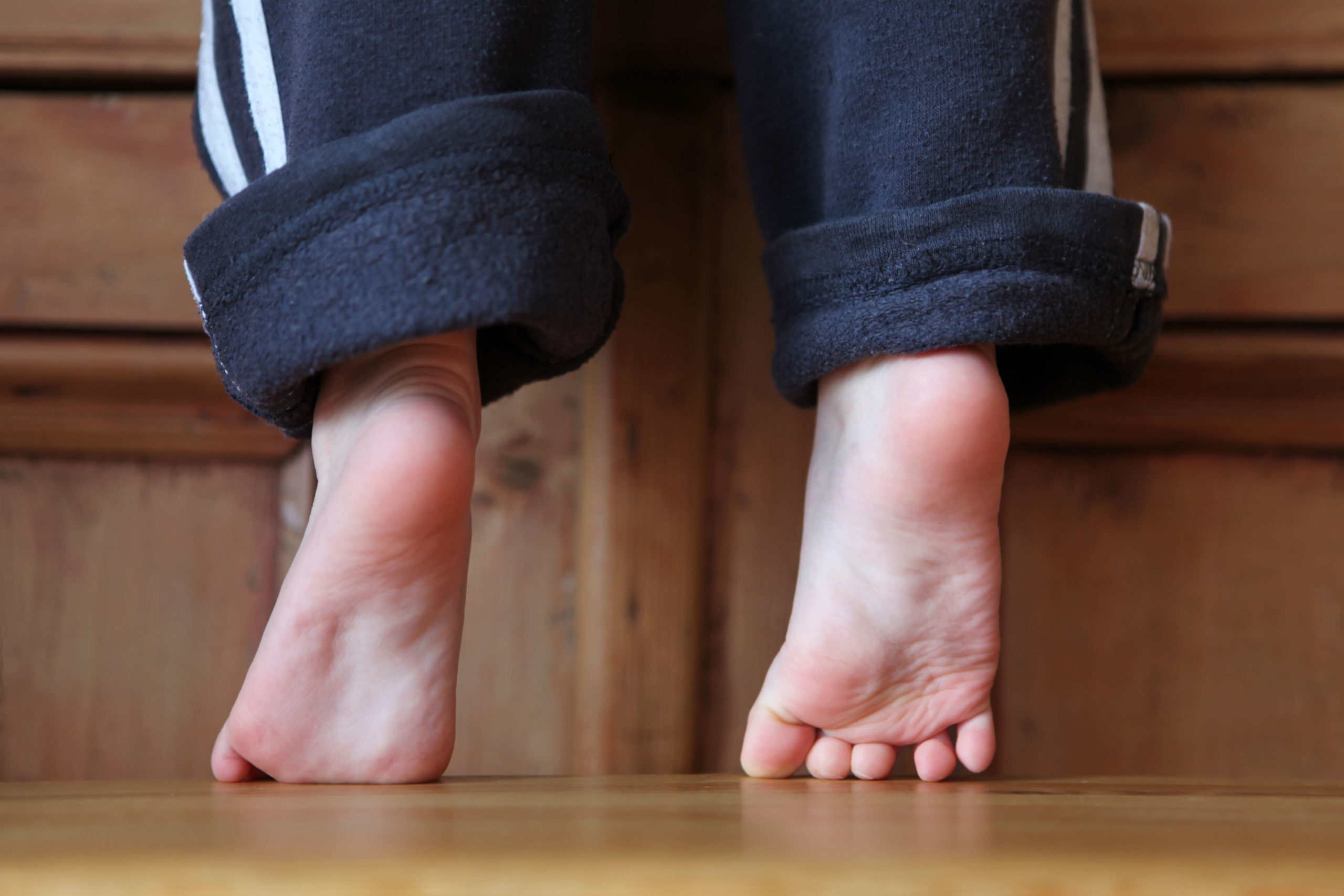Feet!
 Children’s feet come in all shapes, sizes, and positions. It is difficult to know what is typical and what is not. Additionally it’s difficult to know when to refer to a physical therapist or when to get orthotics. Common physical therapy (PT) referrals include: “toeing in”, “over pronation” and “toe walking”. Interestingly, all of these issues can be normal depending on the age of the child and their bony structure.
Children’s feet come in all shapes, sizes, and positions. It is difficult to know what is typical and what is not. Additionally it’s difficult to know when to refer to a physical therapist or when to get orthotics. Common physical therapy (PT) referrals include: “toeing in”, “over pronation” and “toe walking”. Interestingly, all of these issues can be normal depending on the age of the child and their bony structure.
Toeing-In/Out
 Known as the Foot Progression Angle (FPA) or “angle of gait” is between -3 and 20 degrees in most children and adults. Early walkers may show more toe-in (pigeon toed) initially. This resolves as their feet mature and become less like chubby baby feet and more defined like adult feet.
Known as the Foot Progression Angle (FPA) or “angle of gait” is between -3 and 20 degrees in most children and adults. Early walkers may show more toe-in (pigeon toed) initially. This resolves as their feet mature and become less like chubby baby feet and more defined like adult feet.
Toeing in is called metatarsus adductus. It can come from the forefoot curving in. Toeing in can come from torsion (twisting) of the long leg bones. This called “tibial torsion” or “femoral torsion”. It can also come from the hip and how the long upper leg bone (femur) sits in the hip socket. These structural issues often resolve over time in a typically developing child. “W” sitting can cause toeing in and permanent knee and hip misalignment and should be avoided. If children have abnormal muscle tone (high or low), they should be referred to PT. A PT referral is indicated if a child is tripping and falling from toeing in. Toeing out (duck feet) is often related to tight hip musculature and should be assessed by a PT.
Pronation
Often called “over pronation” or “flat feet” is a combination of foot and ankle motion that occurs in a typical gait pattern during running or walking. Everyone pronates! Pronation is often confused with “fallen arches” or flat feet that are mostly soft tissue related not bony alignment issues. Pronation or flat feet become a problem when there are abnormalities in bony alignment and/or lower extremity pain or discomfort. “Flexible flat feet” are not usually treated unless symptomatic. Having a gait analysis with video that can be viewed frame by frame is important for determining the mechanics of a child’s gait pattern with walking and running. A physical therapist can analyze one’s gait at any age. They will also help determine the need for orthotics, PT treatment, or supportive shoes.
Toe Walking
 This may occur when children start walking around 1 year of age. However, it should never continue past the first few weeks to months of walking. Toe walking may be due to high muscle tone in a child’s calves, sensory or vestibular issues, or from retention of primitive or infant reflexes. Physical therapy is indicated if your child continues to toe walk past the first few months of learning to walk. It rarely resolves on its own and is much easier to treat when the child is younger before habits are formed and calves/heel cords begin to tighten. Once a lack of range of motion occurs (inability to bend ankle bringing toes toward shins) there are now two issues to address: walking on toes and muscle tightness which could lead to contracture. Extreme cases will lead to bracing/ankle foot orthotics and eventually to surgery to release the Achilles tendon.
This may occur when children start walking around 1 year of age. However, it should never continue past the first few weeks to months of walking. Toe walking may be due to high muscle tone in a child’s calves, sensory or vestibular issues, or from retention of primitive or infant reflexes. Physical therapy is indicated if your child continues to toe walk past the first few months of learning to walk. It rarely resolves on its own and is much easier to treat when the child is younger before habits are formed and calves/heel cords begin to tighten. Once a lack of range of motion occurs (inability to bend ankle bringing toes toward shins) there are now two issues to address: walking on toes and muscle tightness which could lead to contracture. Extreme cases will lead to bracing/ankle foot orthotics and eventually to surgery to release the Achilles tendon.
If you have concerns about your child’s feet, contact MOSAIC Health & Rehab to schedule a free screen or to set up an evaluation. If your child is walking on their toes, check out Is Toe Walking Really Idiopathic? for more information.
